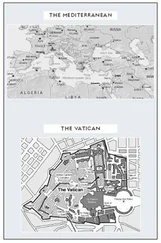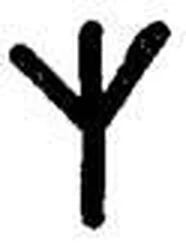“How old is she?”
“The male is eight, the female seven.”
The shock must have been plain on Lorna’s face.
“The specimens mature at a very fast rate,” Malik explained.
Behind the figures, a large dark shape crept out of the shadowy forest. It kept low to the ground, padding on wide paws, tail straight back, ears laid flat. It stalked toward the unsuspecting figures. It was an ebony-furred version of the saber-toothed jaguar killed in the bayou. A juvenile, from the looks of it. Still, this youngster had to weigh over a hundred pounds, most of it muscle. Its eyes squinted toward the two targets-then in an explosion of muscle, it charged at them.
Lorna took a step back in horror.
The male suddenly swung around. The cat skidded to a stop and promptly rolled onto its back, baring its throat and wiggling happily on the ground. The female bent down, one hand supporting her lower back, and rubbed the cat’s chin. A tender smile suffused her face. Her features were a more softly sculpted version of the male’s. The cat’s tail swished in contentment.
Bennett stepped to Lorna’s side. “ ‘And so the lion shall lie down with the lamb…’ ”
Malik explained less philosophically. “They’re all bonded. The habitat was established a year ago. At first there were a few deaths, but over time, the specimens established and grew into an interconnected family of sorts, connected, we suppose, by their mental affinity, sharing at a level we cannot comprehend.”
Lorna heard the longing in his voice-not out of any desire to experience it, but more out of a desire to understand and harness it.
As she watched, another three figures entered the clearing. One carried a crude spear, the other two hauled a small pig between them.
“We stock the island with deer and pigs,” Bennett said. “To keep them fed.”
“They also have wild-growing coconut and mango trees and a freshwater spring,” Malik added. “But other than that and the makeshift shelters, we’ve left them to fend for themselves. To see how they adapt, to coexist, and use their strange intelligence to solve problems. We set up weekly challenges and tests and evaluate their performances.”
Behind the trio of hunters, a pack of a dozen dogs burst out of the forest. Lean, with bushy tails and sharp ears, they looked like miniature wolves, each the size of a cocker spaniel. The dogs swept into the clearing, but rather than moving like a tumbling, riotous pack, there was a strange coordination to their movement. They gave the clearing one full run, then swept eerily to a standstill, dropping simultaneously to their haunches, like a flock of birds settling to a perch.
Another handful of hominids appeared from the huts, drawn out by the commotion. Lorna counted.
At least ten.
“It many ways,” Bennett said, “this place truly is Eden. All God’s creatures-great and small-living in harmony.”
Malik had a less biblical take on the matter. “What we’re seeing is a demonstration of fractal intelligence, where the whole is greater than the sum of its parts. We believe the group has developed a hivelike intelligence, where the individuals in the habitat act like one living unit. It may be why they haven’t developed the ability to speak. They each know the others’ thoughts.”
“And perhaps that’s the way the world once was,” Bennett said. “Before we were cast from Eden.”
Rather than dismiss the biblical analogies this time, Malik nodded. “Mr. Bennett might be right. Perhaps what we’re looking at is the source of the mythology of an earlier earthly paradise, the proverbial Garden of Eden. Various versions of that story persist in cultures around the world. Why is that? Perhaps it rises from some race memory of such a prior union. Just as we still carry magnetite crystals in our brain-fractured pieces of this old neural network-maybe we do somehow recall this earlier paradise.”
“And maybe it’s more than just memory,” Lorna said, finding herself inadvertently caught up in the wonder of what she was seeing.
Malik turned to her for elaboration.
She nodded to the screen. “For the past decade, animal researchers and human psychologists have been exploring the human-animal bond-the strange and deep affinity humans have for animals. No one really knows the source of this affinity. We do know it goes beyond mere affection or need for companionship. New studies show the human body physically responds to the presence of animals in a positive manner.”
“What do you mean by positive?” Bennett asked.
She offered some examples. “People who own animals have lower cholesterol levels and a lessened risk of heart disease. Just petting a cat causes an immediate drop in blood pressure. Bringing companion animals into hospitals and hospices accelerates healing times and boosts immune responses in patients. Yet it remains a mystery why we have this bodily reaction.”
She pointed to the screen. “Maybe that is the answer. Maybe more than just a race memory of Eden resides in us. Maybe our bodies physically remember it, too. Memory locked in both mind and body.”
“That’s an intriguing view, Dr. Polk. And you may be right. Perhaps there remains some weak connection, some residual vibration from the fragments of magnetite crystals that persist, connecting us all together.” Malik sighed and frowned at the figures on the monitor. “Still, it’s the body part that has been plaguing us here.”
She understood, putting the details together in her head. “The genetic throwbacks,” she said to Malik, then turned to Bennett. “You mentioned the Pentagon’s interest in the performance enhancement of humans. You still haven’t gotten it right. With such mutational throw-backs, you can’t bring your research forward.”
Bennett nodded. “That’s right.”
“It’s the Holy Grail of our research,” Malik said. “A human birth without turning back the evolutionary clock.”
“Does the Pentagon even know you’re doing these human studies?”
Bennett shrugged. “They know not to look too closely. It’s why we shipped only animals on the trawler, to demonstrate our progress in order for our funding to continue flowing. We’re so close to fully realizing our goal. Can you imagine if we could tap into this resource? Soldiers who are not only smarter, but with unit cohesion like no other army.”
“But that isn’t our only obstacle,” Malik said. He stared grimly as the hunters tossed the pig onto the hot coals of the fire pit. “It seems our Eden has its serpent, too.”
“What do you mean?”
“Let me show you.”
Malik pointed his remote at the other monitors that surrounded the plasma screen. Image after image appeared. Most were pictures of bloody wounds sustained by various men and women, some in white lab coats, others in worker’s coveralls or khaki uniforms. But one screen played a video, filmed at night, hued in shades of silver. A shape-one of the hominids-bounded down a dark beach and leaped upon a guard smoking a cigarette. It tore at the man’s throat with tooth and nail. The savagery was shocking. Even after the guard was down, the creature continued to claw at the man’s face, ripping away a chunk of his cheek.
“That happened last night,” Bennett said.
“Bouts of hyperaggression,” Malik explained. “They flare up with no warning, no provocation, no explicable reason. One of them might appear gentle one day but would suddenly attack a technician the next. It’s one of the reasons we decided to isolate the colony to the far island. They were growing too dangerous to keep here. Our head of security would have preferred to destroy them, but there is still so much we can learn by studying them. From a safe distance.”
Читать дальше










